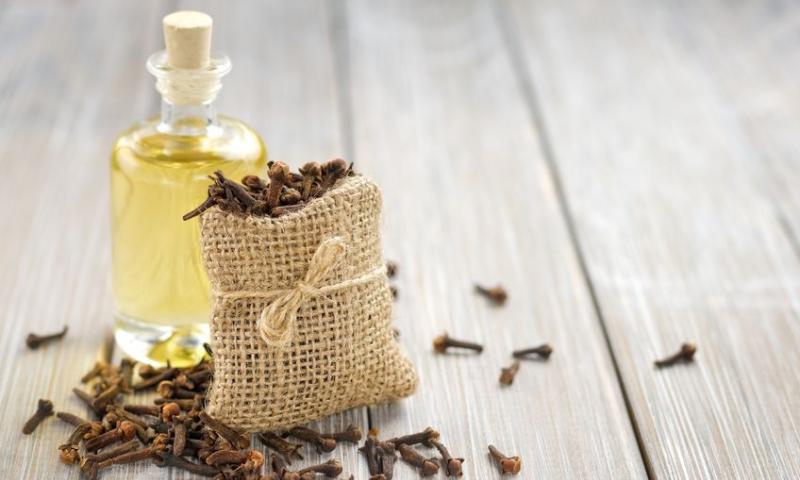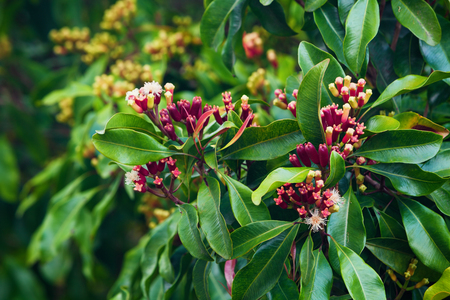 />
/>
LATIN NAME: Syzygium aromaticum
FAMILY: Myrtaceae
GENUS: Syzygium
ORIGIN: native to the Maluku Islands (or Moluccas) in Indonesia
DISTRIBUTION AREA: in Bangladesh, Indonesia, India, Madagascar, Zanzibar, Pakistan, Sri Lanka, and Tanzania
 BOTANICAL INFORMATION: Clove is an evergreen shrub or tree with a pyramidal crown, which has a strong aroma. Leaves are leathery, opposite, petiolate, elliptical, glabrous, and dark green. Flowers are purple-red, small, collected in complex semi umbels. Fruit is a false berry.
BOTANICAL INFORMATION: Clove is an evergreen shrub or tree with a pyramidal crown, which has a strong aroma. Leaves are leathery, opposite, petiolate, elliptical, glabrous, and dark green. Flowers are purple-red, small, collected in complex semi umbels. Fruit is a false berry.
CHEMICAL COMPOSITION
Clove buds contain up to 20% of essential oil and about 20% of tannins. The main component of clove essential oil is eugenol (70-90%), it also contains 3% of acetyl eugenol and caryophyllene, which is an unclean mixture of sesquiterpenes, vanillin, protein substances and mineral salts.
The composition of dried inflorescences includes:
- beta-carotene
- vitamins of group B (B1, B2, B3 or PP, B4, B6, B9)
- ascorbic acid
- tocopherol (vitamin E)
- phylloquinone (vitamin K)
Mineral substances are represented by micro and macro elements, such as:
- potassium
- calcium
- sodium
- magnesium
- phosphorus
- iron
- manganese
- copper
- selenium
- zinc
There are glycosides and mucus in the clove buds.
CLOVE RECIPES
Clove infusion: add 1 tablespoon of the crushed clove to 1 liter of water, infuse for 24 hours. Take 50 ml of infusion for 10 days before bedtime.
Clove decoction: chop several clove flowers and pour 200ml of hot boiling water. Then leave it for an hour to infuse. When ready, divide it into three equal parts. Drink three times a day, before eating.
“Eat less from a box and more from the Earth”
*This article is for informational purposes only. We suggest consulting with a physician before using these or any other herbal supplements.
